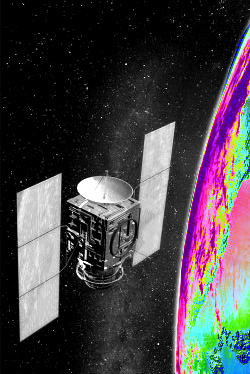Laser test suggests boost
 Australian researchers say new technology could allow a 1,000-fold increase in communication bandwidth between space and Earth.
Australian researchers say new technology could allow a 1,000-fold increase in communication bandwidth between space and Earth.
TeraNet, a network of optical ground stations, specialises in high-speed space communications.
The recent success involved capturing laser signals from OSIRISv1, a laser communication payload from the German Aerospace Center's (DLR) Institute of Communications and Navigation.
Installed on the University of Stuttgart’s Flying Laptop satellite, the signals were detected using two TeraNet optical ground stations during the satellite's flybys.
“This demonstration is the critical first step in establishing a next-generation space communications network across Western Australia. The next steps include joining this network to other optical ground stations currently being developed in Australia and across the world,” said Associate Professor Sascha Schediwy, who leads the TeraNet team at the University of Western Australia’s node of the International Centre for Radio Astronomy Research (ICRAR).
TeraNet's use of lasers instead of traditional radio signals for data transfer offers significant advantages.
Lasers can operate at much higher frequencies, enabling data transfer at thousands of gigabits per second.
This is a stark contrast to the relatively unchanged wireless radio technology used since the launch of Sputnik 1 nearly 70 years ago, which now faces a bottleneck due to the increasing number of data-generating satellites.
However, laser communication is susceptible to interruptions from clouds and rain.
To mitigate this, TeraNet is establishing a network of three ground stations across Western Australia. This ensures that if one site is cloudy, the satellite can transfer its data to another site with clear skies.
One of the ground stations, mounted on a custom-built Jeep truck, is mobile and can be rapidly deployed to sites needing ultra-fast space communications, such as remote communities affected by natural disasters.
The high-speed laser communication capability is set to revolutionise data transfer for Earth observation satellites, enhance and secure military communication networks, and support remote operations in sectors such as autonomous mining and disaster response.
The TeraNet project, funded by the Australian Government, the Western Australian Government, and UWA, received $6.3 million in 2023 under the Australian Space Agency's Moon to Mars Demonstrator Mission grant program.
The German Aerospace Center (DLR) provided in-kind access to their laser communications-equipped satellites.
TeraNet is intended to support multiple international space missions operating between low Earth orbit and the Moon.
It will use both conventional optical communications standards and advanced technologies such as deep-space communication, ultra-high-speed coherent communications, quantum-secured communications, and optical positioning and timing.







 Print
Print